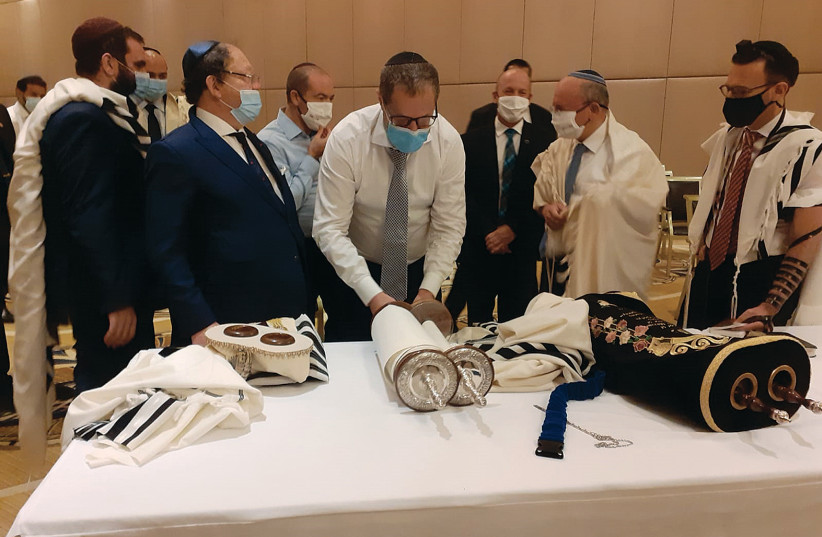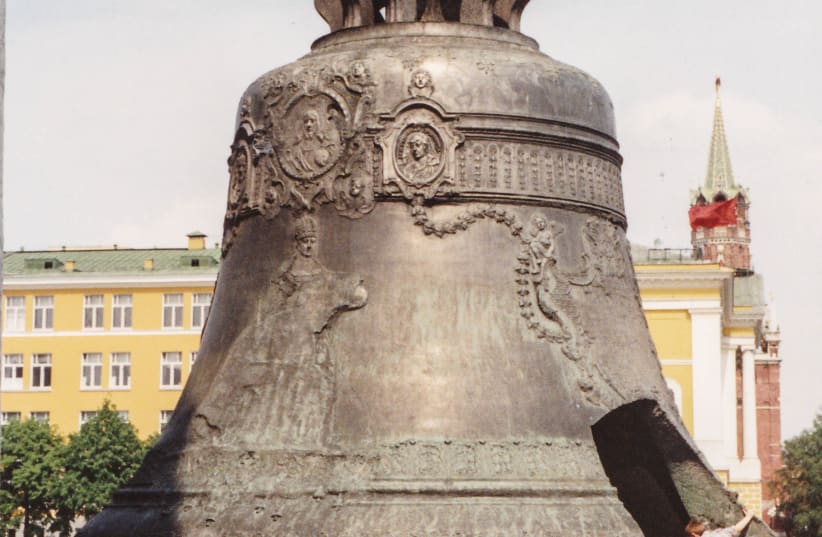The 1990s TV show Northern Exposure centered around the character Dr. Joel Fleischman, played by actor Rob Morrow. To pay off his student loan from the State of Alaska, he was sent to the small town of Cicely – the epitome of living in the Diaspora. In one episode, “Kaddish, for Uncle Manny,” Fleischman had lost his Uncle Manny and was unable to go back to NYC for the funeral, so he tried to get a minyan together to say Kaddish. At one point, Fleischman was asked why a minyan is 10. He answered, “I don’t know. A baseball team has nine people, while a minyan has 10 people.”
Fleischman is not alone in not knowing the answer to the question. Most Jews know the institution of the minyan as a pillar within Judaism, but few know why 10. While the answer is 10 people, the reason behind why 10 is varied. One place to begin the search for those explanations is a pasuk, a sentence, within this week’s parasha, Miketz. We read, “And b’nai Yisrael [children/sons of Israel] came to buy provisions among those who came, for there was a famine in the Land of Israel” (Genesis 42:5).
“And b’nai Yisrael [children/sons of Israel] came to buy provisions among those who came, for there was a famine in the Land of Israel”
Genesis 42:5
We might ask, What could this possibly have to do with explaining why a minyan is 10 people? In Orthodox communities, a minyan consists of 10 Jewish adult men, while in most non-Orthodox communities a minyan can include both adult women and men. As an aside, while we have explored the role of women in recent parshiot, Rabbi Sylvia Rothschild points out, based on the observation of Ruchama Weiss, “that sidra Miketz is the first in Torah that is devoid of any stories of women.”
How does this verse in our parasha explain why a minyan is 10?
The relevant point with our pasuk in Genesis is that “b’nai Yisrael” refers to 10 people – Jacob’s 10 sons. To see how that becomes a justification for why a minyan is 10 people, we follow the second of The Thirteen Hermeneutical Rules of Rabbi Ishmael (1st and 2nd century CE Israel) known as gezeira shava, whereby an inference is drawn from the similarity within one verse and another. In our case, we turn to the Yerushalmi (Jerusalem) Talmud:
“And it is written elsewhere, ‘And I will be sanctified in the midst of b’nai Yisrael’ (Leviticus 22:32) – Just as the ‘b’nai Yisrael’ mentioned here were 10, so the ‘b’nai Yisrael’ mentioned there are 10. From here it is to be derived that every prayer service requires at least 10 Jews” (Yerushalmi Berachot 7:3 as quoted in Torah Temimah on Genesis 42:5).


In the sentence from Leviticus, the phrase “sanctified” can mean certain prayers, and it is attached to the words “b’nai Yisrael,” which is also found in the sentence in our parasha, the 10 “b’nai Yisrael.” So applying gezeira shava goes like this:
(A) Sanctified = prayer; (B) Sanctified is connected to “b’nai Yisrael;” and (C) “b’nai Yisrael = 10. Therefore, A=B, B=C, and A=C, thus certain prayers require 10 people.
We find a related discussion in the Babylonian (Bavli) Talmud (Berachot 21b), where Rav Adda bar Ahava says the kedusha section of the Amidah prayer requires a minyan based on the verse “And I will be sanctified in the midst of the b’nai Yisrael” (Leviticus 22:32).
It is the same verse from the Yerushalmi Talmud used to determine a minyan is 10 people. However, in the Babylonian Talmud a different gezeira shava interpretation/analysis is applied.
In the Yerushalmi, the verse from Leviticus (22:32) is paired with the sentence from this week’s parasha (Genesis 42:5), based on the similar use of the phrase “b’nai Yisrael,” found in both sentences. Yet in the Bavli, that same sentence from Leviticus is connected instead with a sentence from the Book of Numbers, “Separate yourselves from among this congregation” (Numbers 16:21), based on the use of “among” in both sentences.
The context of the sentence in Numbers is the incident of the rebellion of Korah against the leadership of Moses and Aaron. That sentence is in turn connected, by another gezeira shava, by using the word “congregation” found in Numbers 16:21 to the incident of the 12 scouts who had been sent to do reconnaissance about the land of Canaan, and 10 of them came back with “a slanderous report” (Numbers 13:32) (while Joshua and Caleb returned with a more positive assessment). God is very angry with those 10 individuals, hence God’s outburst to Moses and Aaron, “How much longer shall that wicked congregation keep muttering against Me?” (Numbers 14:27). That congregation of 10 scouts, 10 people – another proof that a minyan is 10.
What is astounding is how the Bavli concludes a minyan is 10 people compared to the Yerushalmi. Both Talmuds use “And I will be sanctified in the midst of b’nai Yisrael” (Leviticus 22:32). In the Yerushalmi, that sentence is connected to the verse from this week’s parasha “And b’nai Yisrael came to buy provisions among those who came, for there was a famine in the Land of Israel” (Genesis 42:5). The inferred context here is that participating in a minyan is like getting food – food for the soul, if you will.
On the other hand, the context of the Bavli’s prooftext for why a minyan is 10 people resides with the rebellion of Korah, as well as the 10 individuals who brought back the slanderous report about Israel! What can we derive from that conclusion of why a minyan is 10 people? For an answer to that question, we turn back to this week’s parasha. In a sentence shortly before the one we have looked at, we read “And Jacob saw that there were provisions in Egypt” (Genesis 42:1).
Commenting on this verse, Rabbi Jonathan Kligler teaches, “Rabbi Menachem Nachum of Chernobyl (in his Me’or Eiynaym, ‘Enlightener of the Eyes’) notices that shever, which means ‘grain’ or ‘provisions,’ also means ‘brokenness’ or ‘breakage.’ He also notes Mitzrayim, which means ‘Egypt,’ also means ‘the narrow place’ or ‘constriction.’ Thus, he reads the verse ‘Va’yar Ya’akov ki yesh shever b’Mitzrayim’ as ‘And Jacob saw that there was brokenness in the Place of Constriction.’”
That is to say, we sometimes find ourselves in broken situations, either caused by our actions, the actions of others, or both. Kligler writes, “Father Jacob sees the light glimmering through the cracks of our shattered world... waiting to be released, and uplifted by our searching hearts and our righteous deeds.” With that orientation, we can discern according to the Bavli the explanation why a minyan is 10 people based on Korah’s rebellion and on the slanderous report of the scouts – every time we help make a minyan, we are given the opportunity, the agency, to correct, to repair (tikkun) those “broken” moments from our timeless history. Kligler reminds us, quoting Leonard Cohen from Cohen’s song “Anthem”:
Ring the bells that still can ring
Forget your perfect offering
There is a crack, a crack in everything
That’s how the light gets in
Parashat Miketz always falls during Hanukkah, the holiday when we bring in that salvatory light into our lives and the world. ■
The writer, a Reconstructionist rabbi, is rabbi emeritus of the Israel Congregation in Manchester Center, Vermont. He teaches at the Arava Institute for Environmental Studies on Kibbutz Ketura and at Bennington College.
